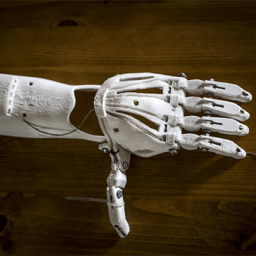6 of the Biggest Trends Driving Our Workforce in 2017
Through evolving robotics and automation developments will result in valuable, efficient and personalized services and will revolutionize the way we collect and interpret data.
A look at how governmental agencies are transforming its workforce from an economic and social perspective provides helpful insights on how to capitalize on emerging governmental trends in the 21st century.
Let’s explore some of these trends that could change the landscape of our workforce:
The Internet of Things (IoT) is rapidly growing its significance in our world, connecting how we live, work, and play.
It’s the ability to connect any device that has an ‘on/off’ switch to the Internet, resulting in a giant network of connected people and/or devices.
Why it Matters:
Utilizing the IoT from everyday cellphone usage to household controls to commercial controls allows a user to reduce energy costs, increase efficiency, and maintain constant interaction leading to potential enhanced relationships.
Data Analytics are being used to make decisions in a variety of ways, from consumer purchasing habits to company growth planning.
Data by itself is not helpful. Only through the analysis and collection of data will it be impactful.
Why it Matters:
Collecting and examining data, per SAS allows companies and industries to uncover hidden patterns, correlations and other insights – providing immediate answers that result in cost reduction, better decision making, and new customer products and/or services.
Human Capital – Employees & Workforce
Companies must be ready to recruit, manage, organize, and engage their employees – across the multi-generational workforce.
Why it Matters:
Employers must be innovative to take some risks to build a strong leadership pipeline. According to Deloitte, this involves: (1) hiring and retaining talented individuals, (2) delivering diversity and inclusion, (3) introducing performance management (formal and informal check-ins), (4) creating an inviting culture, (5) proving real-time learning experiences, (6) facilitating digital platforms via various methods, and (7) utilizing innovative technologies.
Artificial Intelligence (AI) – Automation & Robotics
Through evolving robotics and automation developments will result in valuable, efficient and personalized services and will revolutionize the way we collect and interpret data.
Why it Matters:
The operation and organization of information will be gathered using technology, machine learning, and artificial intelligence, stated by Medium. We have seen a large shift in that many firms are focusing on autonomous vehicles (Tesla, Lyft, GM, Ford, Uber, etc.) and replacement of unskilled works replaced with robots (humans making and serving food to robots, etc.). Some may say ‘what’s next?’
Cyber Security
Because there are so many networking, computers, programs, and data, cyber security will remain a hot topic. The attack from unauthorized users will continue to be a challenge.
Why it Matters:
All companies have confidential information to retain private, especially the political and military sectors. Although there are many companies who specialize in cybersecurity, hackers will continue to penetrate a safe and stable cyberspace.
Drones
Drones also known as Unmanned Aerial Vehicles (UAVs) or Remoted Piloted Aerial Systems (RPAS) are used when a manned flight is difficult or too risky. However, drones are not just used for business any longer – instead, they have also become a hobby for a wide range of consumers.
Why it Matters:
Drones can be used 24-hours a day, seven days a week. They serve a purpose in commercial, business, military, and hobbyist functions. We will continue to see a variety of applications, including delivering packages (medical supplies to remote areas to home delivery of pizzas), capturing real estate for owners, buyers and sellers (aerial property views), surveying dangerous situations, spraying farmer crops, and capturing live events (including wildlife to oil rigs), etc. The ideas are limitless.
Will your firm be exploring any of these trends? Feel free to send me a note at jdunlap@mckinneycapital.com.
Sources:
https://www.sas.com/en_us/insights/analytics/big-data-analytics.html
https://www2.deloitte.com/us/en/pages/public-sector/articles/human-capital-trends-government-perspective.html
https://medium.com/@DigitalGov/trends-on-tuesday-7-tech-trends-for-government-in-2017-2fee31b14095
















